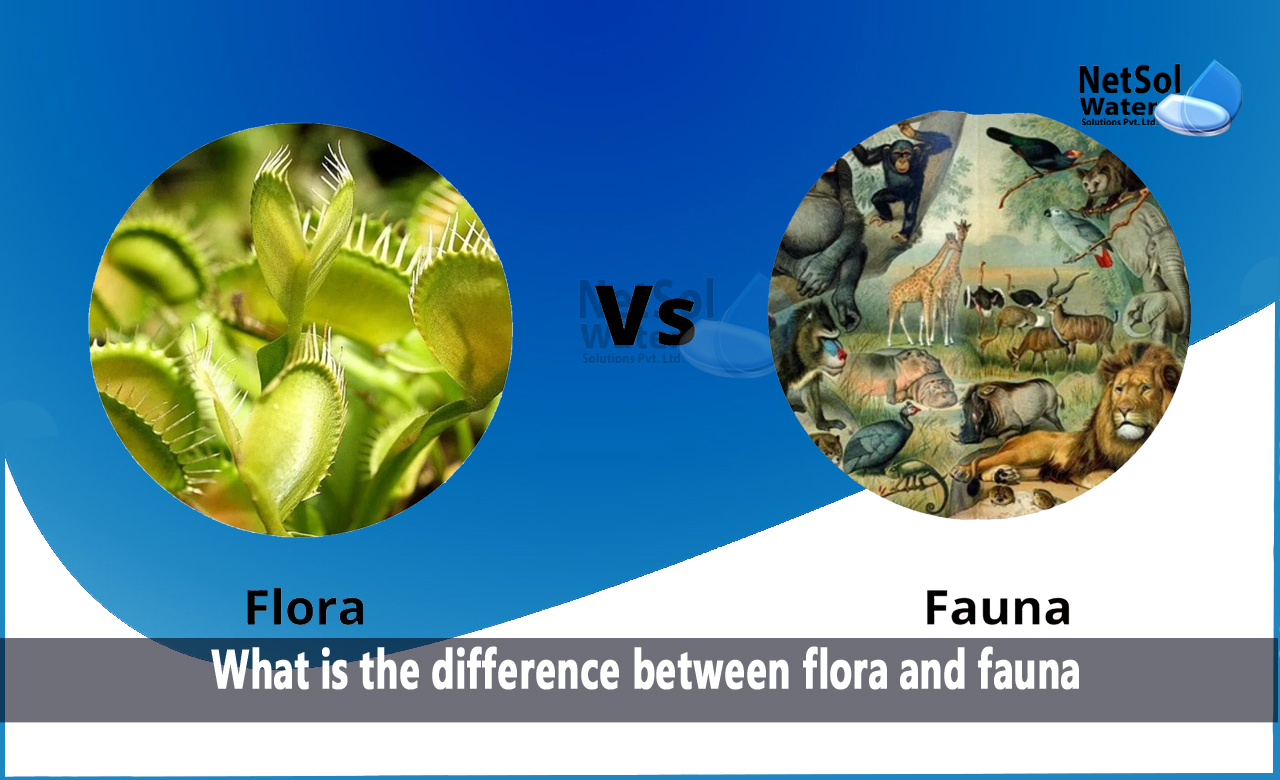The differences between Flora and Fauna are very clear. Flora refers to all living things that can produce their own nourishment and are often stationary. And the majority of plants, trees, bushes, etc. are included in flora. On the contrary, fauna are categorised as beings that must obtain nourishment from other living beings and are typically mobile.
You can see how intriguing biotic aspects flora and wildlife are. For the same reason, we will clarify the distinction between flora and fauna in this article to aid with comprehension.
Our ecosystem is an intricate, interrelated system made up of both biotic and abiotic components. Furthermore, all living things, including plants, animals, and bacteria, are considered biotic components. The abiotic element, on the other hand, consists of non-living things that are necessary for the survival of life. Soil, water, climate, and other factors are among them.
What is flora?
It alludes to the assortment of indigenous plants that make up an ecosystem. There are also plants that only grow in a particular region or time. Moreover, it is a botanical phrase that designates a wide range of plant life that is present in a certain area, or at a particular time of the year.
Additionally, they can be categorised according to the climate, geography, time period, and other factors. Nonetheless, the majority of the time, we categorise it based on the environment in which it naturally occurs. Therefore, we have natural vegetation, agricultural vegetation, horticultural vegetation, and finally, weed vegetation.
What is fauna?
The word "fauna" comes from the Greek language. Moreover, it has the name of a Roman Goddess. As a result, it alludes to a particular collection of creatures existing in a certain habitat, environment, or time. In other words, it denotes the presence of the animal kingdom in a location.
Animals, birds, and germs are also included. Moreover, they are dependent on plants and animals for sustenance because they are unable to produce it themselves. Also, we group them into other categories. They are so referred to as Cryofauna, Cryptofauna, Infauna, Epifauna, Megafauna, and Microfauna.
What is the difference between flora and fauna?
There are many different life forms that possess and exhibit traits of both flora and fauna, despite the fact that the differences between the two are rather clear. Euglena is an example of an organism that may act like plants, producing their own food and eating like animals do. The differences between flora and fauna are given below:
|
Basis of Comparison |
Flora |
Fauna |
|
Meaning |
It is the natural vegetation, in a specific geographical region, which includes plants, algae, fungi, and more. |
It includes the animals that reside in a specific geographical region, which includes animals, microorganisms, birds, and more. |
|
Study |
The study of flora is known as Botany. The one who studies it is Botanist. |
The study of fauna is called as the Zoology. The one who studies it is a Zoologist. |
|
Classification |
Native flora, agricultural flora, horticultural flora, and weed flora |
Cryofauna, cryptofauna, infauna, epifauna, macrofauna, megafauna, meiofauna, and microfauna |
|
Nutrition |
Autotrophs which are capable of making their own food and energy |
Heterotrophs which depend on plants for their food and energy |
|
Composition |
All plants |
All animals |
|
Evolution |
These are the first form of life to appear on the planet earth |
Appeared after flora |
|
Cell Wall |
Present |
Absent |
|
Chloroplast |
Present |
Absent |
|
Locomotion |
Immovable |
Mobile |
|
Climate |
Climate affects the flora |
Fauna affects the climate |
|
Example |
Forests, grasslands, flowering plants, trees, etc. |
Animals, birds, fish, insects, etc. |
Now, with all the knowledge of flora and fauna, we must understand their relationship with each other and how they help in maintaining biodiversity. Therefore, individuals must take actions to save their air, water, and land as well as all other living things.
We at Netsol Water, as environmentally conscious Indian citizens, promise to save our biodiversity, conserve water, and properly handle wastewater. In this regards, we provide a wide range of water and wastewater treatment solutions for the preservation of natural and fresh water sources.
Leading providers of Water Treatment Plants in India
Various businesses and industries can get in touch with the water treatment specialists, at Netsol Water for a number of cutting-edge water treatment methods, including RO Plants, water softeners, etc. For a range of sectors, we have also produced and designed unique wastewater treatment plants.
We have also been offering municipalities wastewater treatment services for a long time. These services include phosphate removal, odour control, sludge dewatering, chlorination and dechlorination, and water clarification, etc. For further information, contact us by phone at +91 9650608473 or by email at enquiry@netsolwater.com.



